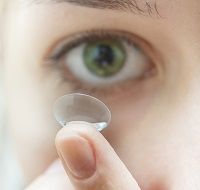Article
Contact Lenses Change the Microbiome of the Eye
Author(s):
People not blessed with 20/20 vision often choose to wear contact lenses to avoid cumbersome eyeglasses.

People not blessed with 20/20 vision often choose to wear contact lenses to avoid cumbersome eyeglasses.
However, research published in mBio revealed that contact lenses could alter the microbiome of the eyes.
As such, a recent CDC report encourages contact lens users to cautiously follow instructions for wearing, cleaning, and storing lenses to prevent infections like microbial keratitis.
To compare the eye microbiota of people who wear contact lenses with those who do not, Maria Dominguez-Bello, PhD, associate professor of medicine at New York University School of Medicine, and colleagues, conducted a study involving 58 adult outpatients seeking eye care.
The team used a laboratory technique called 16s rRNA sequencing to compare the bacterial communities of the eye’s surface and the skin under the eye.
They assessed a total of 250 samples, 116 of which were conjunctiva cotton swabs, 114 cotton swabs of skin under the eye, and 20 from contact lenses.
Findings suggested that the microbiota from the surface of the eye of contact lens wearers more closely resembled human skin, compared to those from the group who didn’t wear lenses.
What does this mean?
Contact lens wearers’ microbial community on the eyes’ surface was rich in the bacteria pseudomonas, acinetobacter, methylobacterium, and lactobacillus.
However, those who did not wear the lens exhibited lower levels pseudomonas, acinetobacter, methylobacterium, and sphingobium.
Interestingly, pseudomonades, acinetobacter, methylobacterium, were more prevalent in skin samples of non-lens wearers than in the eye itself, suggesting the potential classification of skin bacteria.
Furthermore, the conjunctiva of people who were lenses showed lower levels of haemophilus, streptoccus, staphyloccus, and corynebacterium.
As such, researchers concluded that the conjunctival microbiota of lens wearers was more similar to that found on skin, compared to non-lens wearers.
Experts believe the bacteria could transfer from the finger to the lens and then to the eye’s surface. Typically these transfers are temporary; however, the lens may exert pressure on the eye microbiome for a more permanent alteration.
Although researchers don’t yet have concrete advice for contact wearers, they do recommend stringent care for the lenses.





